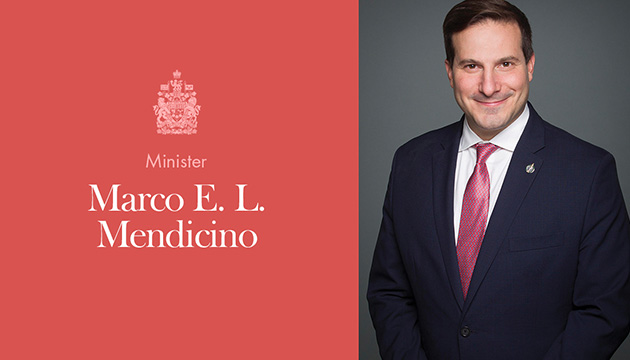April 16, 2024 - Bill C-3 - The Canada Health Act of 1984 – known as Canada’s Medicare – turns 40 this month! Forty years ago in April 1984, Parliament adopted Bill C-3 to enhance accessibility to health care by explicitly prohibiting extra billing by physicians and user fees by health care facilities and by adding ‘accessibility’ as an additional criterion to the four principles enshrined in the Medical Care Act of 1966, the predecessor and first national health care insurance law in Canada.
The first vote took place on April 9 in the House of Commons; the second on April 17 in the Senate; and finally on the same day, it received Royal Assent.
Thus, was born The Canada Health Act of 1984 (CHA-1984) – today’s national health law that guarantees access to needed hospital and medical services for all Canadians anywhere in the country, without charge at the time of need, without extra charges beyond that allowed by the single-payer, non-profit public authority, and without fear of financial catastrophe.
Phenomenal! The votes were unanimous. But the unanimity of votes belies the tortuous journey from aspiration to realization – the intervening fierce struggles that confronted the Liberal Party that at times seemed certain to abandon its dream, saved only by its Leader.
Story of political struggles and triumph
I knew the journey from the aspiration to have pan-Canadian healthcare insurance, which first emerged during the Liberal Party convention held in Ottawa on 07 August 1919, took nearly half a century before the first national health insurance law (the Medical Care Act of 1966) was passed, and another 18 years to transform it into today’s Medicare legislation.
What I did not know – not until recently – were the intervening fierce political struggles, within and without the Liberal Party caucus and cabinet, not to mention the opposition from expected sectors and the medical community. And the crisis in the cabinet to eventual triumph. Not until recently when I find, while researching more recent references for my presentation last month at an alumni gathering, Professor Penny Elizabeth Bryden’s 2009 paper, The Liberal Party and the Achievement of National Medicare – at once a fascinating and instructive read. [Professor Bryden is with the History Department at the University of Victoria in British Columbia.]
The professor’s paper captures the journey that led to the adoption of Canada’s Medicare: “The federal Liberal party had to first adopt health insurance as a serious component of its electoral platform, devise a strategy for dealing with provinces which had constitutional jurisdiction over health, and finally wrestle with those within the party—and within the cabinet— who continued to question whether Canada was financially prepared to administer such a costly program. The strategies were devised and the battles were fought privately, but had an important effect on the timing and shape of a national health insurance system.”
An opener, indeed, into the policy-making process and a reminder that members of the same political party do come to the caucus room and ministers to the cabinet table to debate forthrightly and forcefully the options before them. Often, the leader has no difficulty discerning the emerging consensus. But not unknown, the leader may just have to give a clear signal or direction in rare situations, as it happened in the present story. Amazingly, teamwork almost always works in our parliamentary democracy where the Leader, either in Government or in the Official Opposition, commands the utmost respect and caucus trust. A reminder, too, that shifting perspectives and balance of factions within the same political party play a significant role in political decision- making.
This commentary is a distilled summary of this historical paper, with few annotations.
Competing camps in caucus and loss of resolve
The Liberal caucus reformers in favor of the 1919 policy resolution for a national health insurance “won the struggle to direct the 1963 electoral approach,” but lost its dominance in the general caucus after the election. Then, the struggle in cabinet where two camps of almost equal strength emerged, with one professing fiscal restraint.
Finally, the question around ease of program implementation was to influence choice: pension reform or national health insurance? The stronger support for pension reform than for health insurance at a Liberal rally and the hostility of the medical community – the doctors had gone on a 23-day strike in Saskatchewan when the 1962 medical insurance plan was introduced – favoured pension reform. There was, therefore, no surprise when the Minister of National Health and Welfare Judy LaMarsh, herself a reformer, later announced that pensions were “the thing to start with ... because [the program] would be self-funding and we didn’t know how much money there would be to start Medicare.” Translation – Medicare was not “in the list of first steps to be taken by the new Pearson government” of 1963. But not dead.
Wrote historian Bryden: “Timing was everything. The group of left-leaning policy planners who had pushed health insurance to the front of Liberal consciousness while in Opposition were no longer quite as powerful as they used to be. The reformist cabinet ministers... had had their wings clipped, ...So despite a strong commitment to health insurance in 1963, just one year later the resolve was shaken.”
Resurrection of hope - summer of 1964
The Hall Commission (named after Justice Emmett Hall who chaired the Commission) released its report in the summer of 1964. It, “amazingly, advocated a government-sponsored system of full health insurance,” that is, for both hospital and physician services.
Liberals seized the opportunity and decided to proceed. The provinces and territories were to be given “firm proposals” on the envisioned insurance plan to avoid indefinite discussions. The Minister of National Health and Welfare “went ahead...and began soliciting the views of the provinces in the spring of 1965.” Yet another reformist observed that “1965 would be too early to take on health insurance,” but emphasized the “need for a united Liberal front on the health question was a good reason to head back to the polls quickly.”
“When to begin health negotiations, when to call an election” became the preoccupation of the Liberals. It meant “politicians wrangled over timing” while ministerial departmental officials at Finance “struggled to design a strategy regarding health insurance.” They remembered the chief lesson learned from the pension reform experience – the provincial and territorial discontent when the federal government offered a new social policy initiative with “the detailed conditions of the agreement, the detail of the audits, and the imposition of sanctions based on Federal judgment alone.” An understandable grievance.
Thus, the federal proposal at this juncture would take a novel approach, that is, the provinces would “not be required to sign an agreement; instead, they would simply have to enact legislation which established a plan in conformity with the principles enunciated by the Federal Government after, and as a consequence of, consultation with the provinces; and provincial governments would be partially funded if they enacted legislation conforming to those principles.”
Simple, clear, and consultative in tone.
Unveiling the federal offer in mid-July 1965
Prime Minister Pearson revealed the following federal offer to the Premiers and Leaders of the provinces and territories (called ‘first ministers’ meeting): “Pass legislation that establishes an insurance scheme that covers a comprehensive range of physicians’ services, is universal in its coverage, is publicly administered, and is portable, and the federal government will pay half of the national cost of covering such programs.” And the provinces were given time to consider the offer.
The forthcoming standards had been identified.
Observed Professor Bryden: “It was the first time since taking office that the national Liberals had acted in a calm, confident manner with regards to the provinces; it had taken years of discussion to get to this point, but by the summer of 1965, Pearson’s team was ready to take on national health insurance.” He dropped the writ for the fall election.
Yet another minority Liberal government and reversal of intraparty power
The November fall election returned yet another minority Liberal government. More, the relative strength and influence of the reformists were diminished and the members of the more fiscally conservative camp were emboldened to caution against new and expensive federal spending. This new situation “gave reluctant provinces...a far better position to influence the final shape that Medicare would take.” Interestingly, there was no vocal opposition to the specific conditions of the federal offer and there appeared only a few signs that the commitment to Medicare was sliding. In fact, the new health ministry in 1965 portrayed “the cabinet’s commitment to Medicare.”
Be that as it may, the election results “opened the door for provincial critiques of the national Medicare proposals; ...provincial premiers and health ministers went on the offensive.” Civil servants in the Finance department felt the provinces needed more time to be on board. Thus, the start date for Medicare was delayed until 1 July 1968.
Medicare delayed until 1 July 1968.
This delay engendered a vicious cycle effect. It created a perception of “a weakening federal resolve.” Consequentially, “provinces became even more critical, with Ontario openly condemning the federal role in subverting provincial priorities.” Finance ministers voiced concerns about the costs of introducing legislation. Social determinants of health were given higher priority than improvements in medical care programmes. Provincial premiers, particularly those with cash-poor treasuries, “raised serious questions about the cost, constitutionality, and precedent of a national health insurance program.” Hence, the continuing question in the cabinet on whether to keep “the already-revised start date of July 1, 1968.”
Meanwhile, a declining economic outlook was confronting Pearson’s 1965 cabinet. The contrasting positions between the left and right of center ministers were intensifying. The public had not taken kindly. The more right of center ministers were exerting more dominance.
From Cabinet crisis to Medicare triumph
The fall of 1967 saw the cabinet inching to a crisis. “Those who counselled delay—and potentially even elimination—of the federal Medicare scheme” were as adamant as those who “insisted there should be no delay.” Finally, “the Prime Minister stepped in...and pressed the cabinet for a decision in January 1968.” He announced that “Medicare was to commence forthwith.” The Cabinet made its decision within two days of his intervention to keep the July 1968 deadline.
Concluded historian Professor P.E. Bryden: “Dealing with their own strengths and weaknesses, their own angels and albatrosses, both inside and outside the party, proved to be the central challenge for the Liberals in the achievement of a system of national health insurance.”
Now, the mother of Medicare
Canadians have long called Premier Tommy Douglas of Saskatchewan as the father of Medicare for boldly pioneering the government-run hospital insurance in his home province in January 1947 and its complementary sequel, medical insurance for physician services in 1962 – the first not only in Canada but also in North America.
Just as bold and visionary, then Minister of National Health sociologist Monique Begin applied her signature focus and enhanced accessibility to health care in the CHA-1984. Now the crown jewel of Canada’s social programs, Canada’s Medicare reflects our nation’s sense of equity and solidarity. Profiled as a “Canadian health icon” in the medical journal, Lancet., she reflects the bold vision and courageous leadership that helped earn for CHA-1984 the unanimous affirmative vote in Parliament. In my estimation, it is fitting and proper on this 40th birth anniversary of the Canada Health Act of 1984 to, henceforth, call her the mother of Medicare.
[Ed’s Note: Dr. Rey Pagtakhan – a retired physician-professor-turned-parliamentarian and the first Philippine-born Canadian member of parliament and cabinet minister – has championed Canada’s Medicare since his first election in 1988, once tabling a motion that it be preserved and having continually applauded its virtues as a public policy in Canada and abroad. His column, Medisina at Politika, debuted in 2012 with a three-part series on Medicare. Last year, he published Resolve to Modernize Medicare. Last month, he presented on the topic with fellow alumni via ZOOM.]













